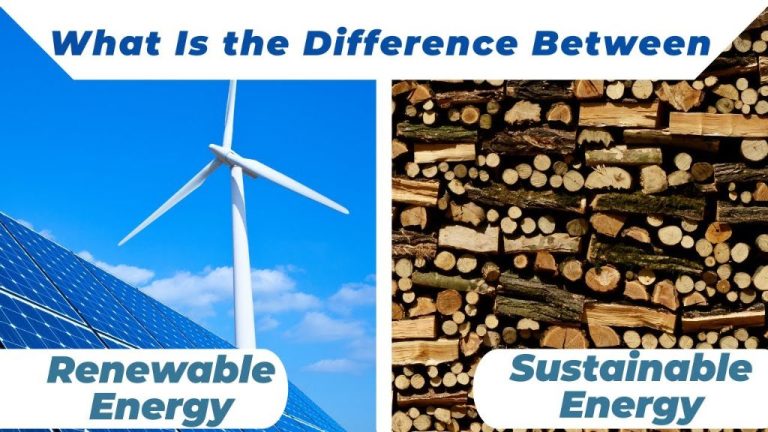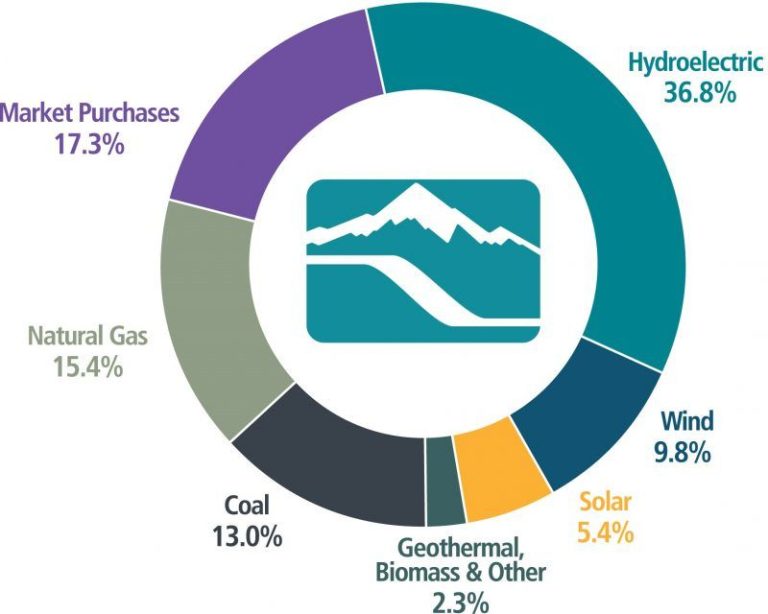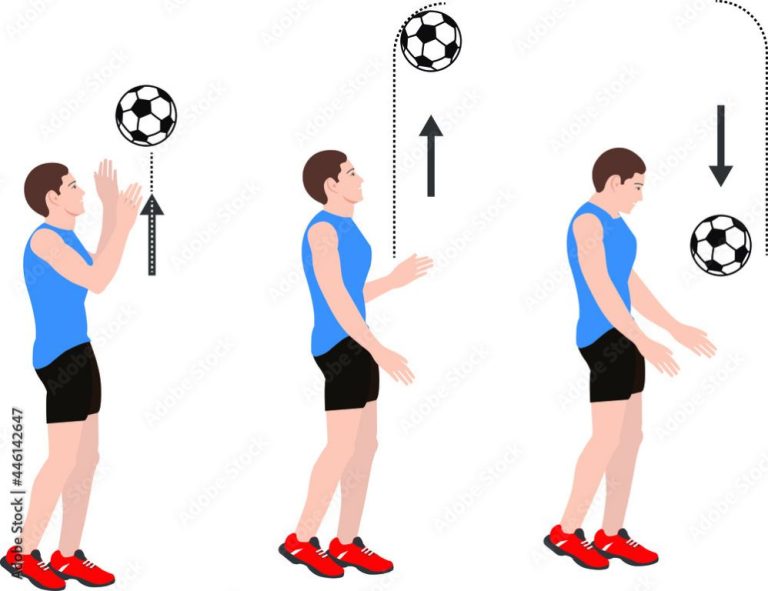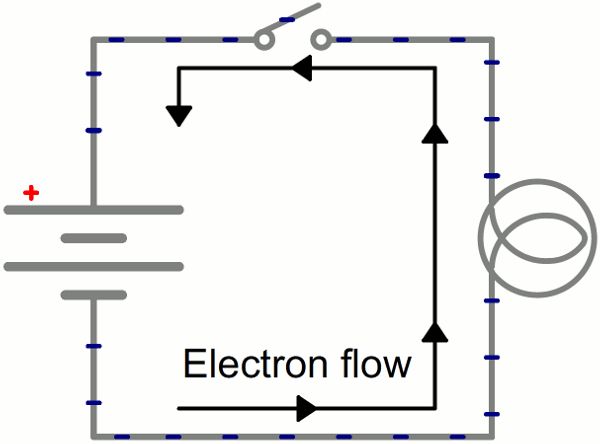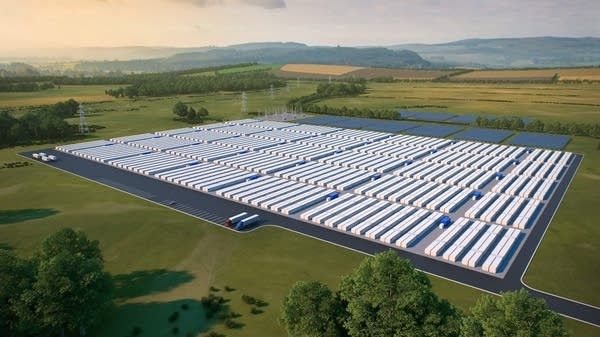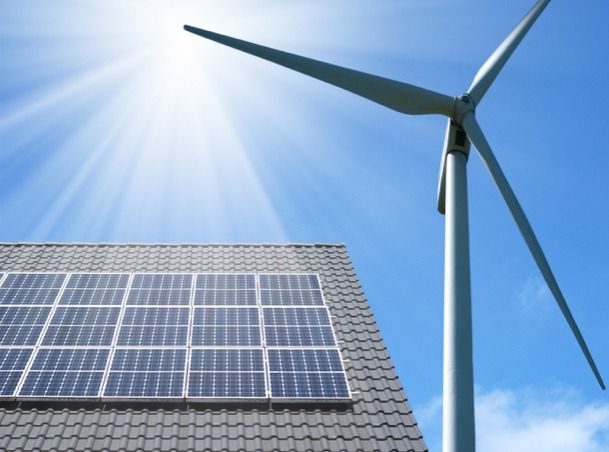What Are The Steps Of The Power System?
The power system refers to the network that carries electricity from where it is generated to where it is consumed. It consists of multiple components working together to deliver power to end users like homes, businesses, and factories.
The key steps in the power system process are:
- Power generation at plants like coal, nuclear, hydro, wind, and solar.
- Transmission of high-voltage electricity through transmission lines.
- Distribution of lower voltage electricity to individual customers.
- Consumption of electricity by end users.
- Monitoring and control of the flow of electricity through load dispatch centers.
In this overview, we will explore each of these steps in more detail to understand how the power system delivers electricity across regions.
Power Generation
Power generation is the first stage of the power system. It involves converting primary energy sources like coal, natural gas, nuclear, hydro, wind, and solar into electrical energy. There are different types of power plants that utilize these energy sources to generate electricity.
In a thermal power plant that runs on fossil fuels like coal, the fuel is burned in a boiler to heat up water and produce high pressure steam. This steam then spins a turbine connected to an electrical generator to produce electricity through electromagnetic induction. In a nuclear power plant, nuclear fission reactions generate heat which boils water to spin a turbine. Similarly, geothermal power plants use naturally occurring hot water or steam from under the earth’s crust to run turbines.
Hydroelectric power plants utilize the potential energy of elevated water in a dam or reservoir. As water falls, it spins the turbine blades which then drive a generator. Wind power uses the kinetic energy of wind to spin turbine blades and produce electricity. Solar power plants use photovoltaic cells that convert sunlight directly into electrical energy through the photovoltaic effect.
Regardless of the energy source, most power plants operate on similar principles of generating mechanical motion to spin electrical generators that then produce alternating current electricity. The voltage is stepped up by transformers before being sent to the transmission network.
Transmission
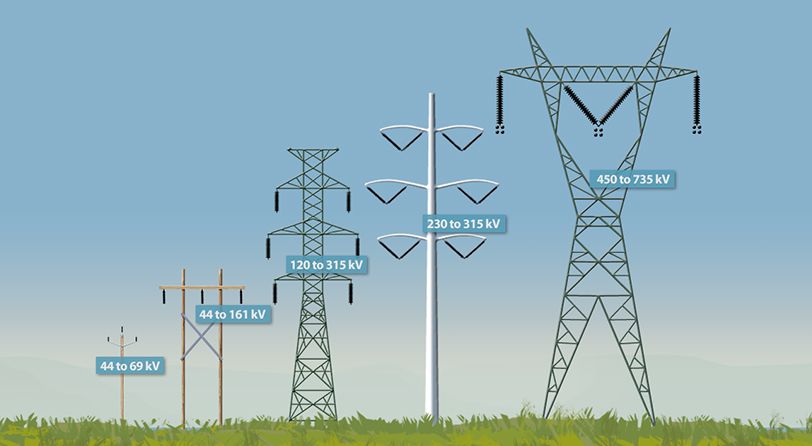
Electricity is transmitted from power plants to distribution stations through transmission lines. Transmission lines carry electricity at very high voltages, ranging from 69kV to 765kV. At these high voltages, the current is lower, which reduces losses during transmission over long distances.
The main components of the transmission system are:
- Transmission lines – Conductors like aluminum or copper that carry electricity from power plants to substations.
- Transmission towers – Steel lattice structures that support transmission lines.
- Transformers – Step up voltage at the power plant and step down voltage at substations before distribution.
- Substations – Facilities with transformers that increase or decrease electricity voltage between transmission and distribution.
Transformers play a critical role in transmission. Step-up transformers located at power plants increase the generator voltage to high transmission levels. Step-down transformers located at substations reduce the transmission voltage to lower levels for distribution. Without transformers, it would not be feasible to transmit electricity over long distances.
Distribution
Distribution takes electricity from substations and delivers it to end consumers. The distribution system is a network that connects substations to customers. It consists of components like:
- Distribution lines – Transmit electricity from substations to distribution transformers mounted on poles or pad mounted on the ground.
- Distribution transformers – Step down voltage from distribution line levels to utilization levels for customer use. Transformers can be pole mounted or pad mounted.
- Service drops – Smaller power lines that run from a transformer to a customer’s facility.
- Metering equipment – Meters record customer usage for billing.
- Protective equipment – Devices like fuses and reclosers that isolate faults.
The distribution network supplies low voltage power to residential areas, commercial buildings, and industrial plants. It is the final stage in the delivery of electricity to end users.
Substations
Substations play a critical role in the power transmission and distribution system. They act as intermediate switching points to transform voltage levels and regulate power flows across the grid.
There are several different types of substations:
Step-Up Substations
Located at power generation plants, these substations increase low voltage electricity from the generators to much higher voltages for more efficient long-distance transmission.
Step-Down Substations
These substations, often located near load centers like cities and towns, reduce high voltage transmission levels to lower distribution voltages that can be safely used by consumers.
Switching and Distribution Substations
Switching substations redirect power flows, while distribution substations transform voltages down to final end-user consumption levels.
Converter and Inverter Substations
These specialized substations interconnect AC and DC transmission networks. Converter substations transform AC to DC, while inverter substations convert DC back to AC.
Properly designed substations are vital for maintaining power system reliability and efficiency from generation to end-use.
Load Dispatch Centers
Load dispatch centers play a critical role in monitoring and controlling the power system in real-time. They are equipped with sophisticated computer systems and software to perform key functions:
Monitoring and Control
The SCADA (Supervisory Control and Data Acquisition) system allows load dispatchers to monitor the status of the entire grid – from power plants to substations and major load centers. It provides real-time data on voltages, power flows, circuit breaker positions and equipment status. Operators can control equipment remotely to manage power flows and respond to disturbances.
State estimator programs take the real-time measurements and estimate the operating state of the entire system. This allows operators to detect problems not being directly monitored.
Contingency analysis regularly simulates “what-if” scenarios like the loss of a transmission line. This identifies potential overloads or stability issues so preventive actions can be taken.
Load Forecasting
Load forecasts estimate the upcoming demand for power on an hourly, daily, and seasonal basis. These forecasts allow scheduling of power plant operations and procurement of reserves needed to maintain reliability of supply.
Weather data plays a big role in load forecasting. Models correlate weather factors like temperature and humidity with historical load levels. Short term forecasts for next-day operations rely heavily on weather projections.
Longer term forecasts also consider economic projections, population growth, and other factors affecting power demand. Load forecast uncertainty increases substantially for forecasts beyond a week.
Accurate load forecasting ensures efficient and reliable grid operations. Over-forecasting leads to excessive reserves and operating costs. Under-forecasting risks power shortages during peak demand periods.
Consumption
Electricity consumption refers to the amount of electrical energy that consumers use. There are different categories of consumers that use electricity:
-
Residential – Households that use electricity for lighting, appliances, electronics, etc.
-
Commercial – Businesses, offices, hospitals, etc. that use electricity for lighting, appliances, machinery, etc.
-
Industrial – Factories and industrial facilities that use large amounts of electricity for manufacturing, machinery, etc.
-
Transportation – Railways, subways, electric vehicles that use electricity for transportation.
Electricity consumption varies throughout the day and seasons. There are peak demand periods when consumption is highest, usually mid-day and early evenings when residential and commercial usage is high. Off-peak periods occur overnight when demand drops. Consumption also rises in summer with increased air conditioning use and winter with more lighting usage.
Utilities track demand patterns closely to plan generation and meet peak needs. Some utilities offer time-of-use pricing to encourage consumers to shift usage to off-peak times and balance demand on the grid.
Trading
Electricity trading is an important part of power systems. It involves the buying and selling of electricity between generators, distribution companies, and other market participants. There are two main ways that electricity trading occurs:
Bilateral Contracts
Most electricity trading happens through bilateral contracts between generators and distribution companies. In these contracts, a generator agrees to sell a certain amount of electricity to a distribution company at an agreed upon price over a period of time, usually multiple years. This provides stability and predictability for both parties. The distribution company locks in an electricity supply at a known price, while the generator has a guaranteed customer.
Power Exchanges
Power exchanges provide a spot market for electricity trading. On an exchange, generators and distribution companies can buy and sell electricity for next-day delivery. The price fluctuates based on supply and demand. Exchanges allow participants to fine-tune their electricity needs and compensate for differences between contracted amounts and actual demand. They also provide price transparency and discovery. Major power exchanges include the Indian Energy Exchange and POWERNEXT in Europe.
Electricity trading enables the efficient functioning of power systems. By facilitating transactions between producers and buyers, it ensures electricity gets to where it is needed. The combination of long-term bilateral contracts and short-term exchange trading provides stability and flexibility.
System Operation
System operation involves managing and controlling the power system in real-time to ensure efficient, stable, and reliable delivery of electricity. The key aspects of system operation include:
Maintaining stability and security of grid operations
System operators continuously monitor voltage, frequency, and power flows across the transmission network. They take preventive and corrective actions as needed to maintain stability of the system and avoid outages. This involves managing equipment like transformers, capacitors, and reactors that help regulate voltage. System operators also monitor generator output and speed to catch frequency fluctuations early before they cascade into major events.
Frequency and voltage control
System operators have various tools to control frequency and voltage. To control frequency, they can dispatch power plants to ramp production up or down. They also utilize load shedding as a last resort, where blocks of load are cut off to immediately stabilize the grid. For voltage control, system operators make adjustments to transformer taps, capacitors/reactors, and generator excitation. All of this is coordinated in real-time through energy management systems and SCADA systems.
Conclusion
In summary, the key steps of the power system are power generation, transmission, distribution, load dispatch centers, and consumption. Power is first generated at power plants using various energy sources like coal, natural gas, nuclear, hydroelectric, wind and solar. The generated electricity is then transmitted at high voltages through transmission lines to substations located near demand centers. At substations, the voltage is stepped down for distribution to end consumers through distribution lines. Load dispatch centers monitor the flow of electricity and balance power supply with demand. Finally, the power is consumed by residential, commercial and industrial customers.
All these steps from generation to consumption need to work together seamlessly through careful planning and operation. Integrated resource planning is crucial to ensure adequate power generation capacity and transmission infrastructure to meet future demand. Real-time monitoring and control of the grid is essential to balance load and respond quickly to disturbances. With growing complexity from new technologies like renewable energy and electric vehicles, coordinated operation of the power system is becoming more important than ever.

